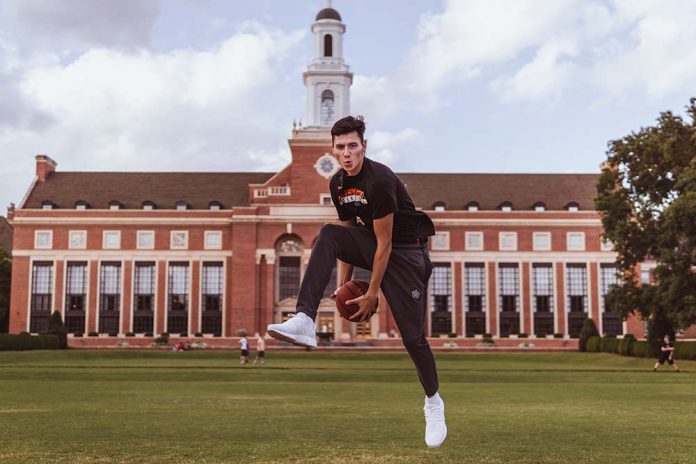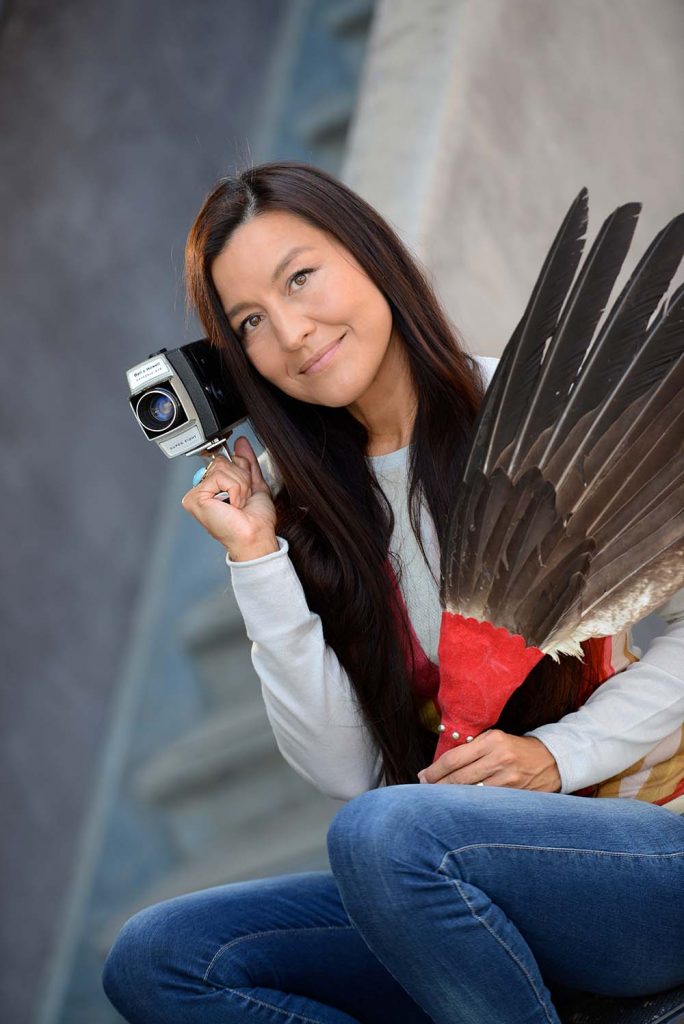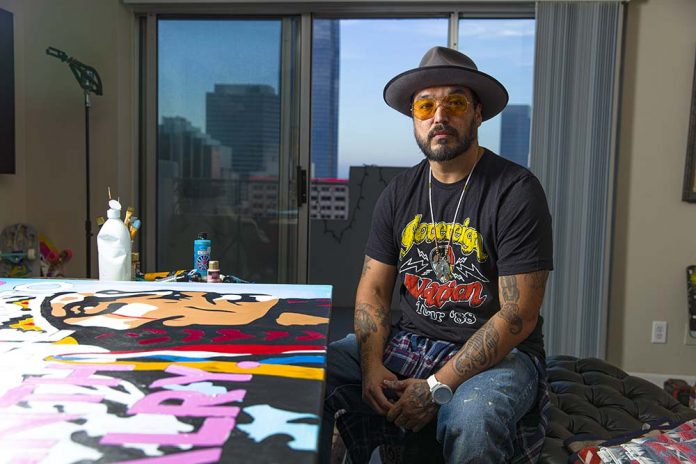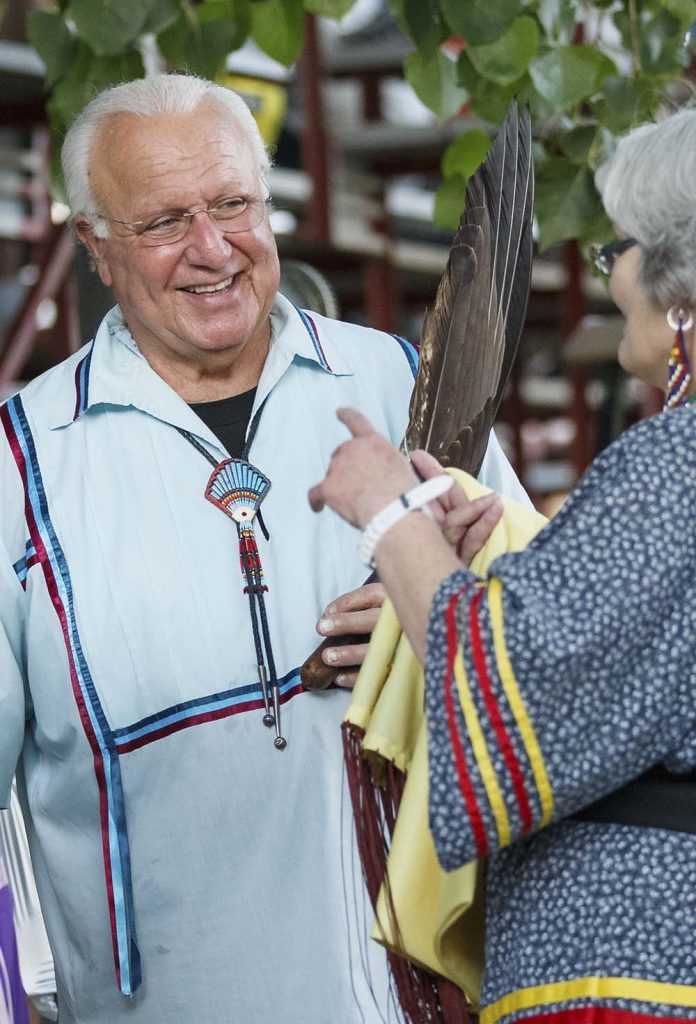A photo album of these native Oklahomans is striking. One picture is of an accomplished TV and film actress strolling down the red carpet; there’s an action shot of a Division I college athlete. Other snaps include a successful fashion designer, a health-care professional receiving accolades from the U.S. surgeon general, and an internationally acclaimed poet.
These are images of today’s Native America, which, not long ago, the U.S. government worked industriously to eradicate. Native children were taken to boarding schools, where their braids were cut, their traditional clothes discarded, their languages and religion forbidden. For decades, a nationwide effort “educated” Native heritage out of them.
It didn’t work.
America celebrates Native culture now. However, an appreciation and a healthy respect for the environment, natural medicines and food, the very structure of our government and laws are not new ideas. These and many other ideals have flourished within tribes, bands and federations for millennia.
Instead of hiding their heritage, some of our most celebrated public figures, creators, intellectuals and athletes embrace it and bring their traditions to bear on making our world better through art, entertainment, service and philanthropy.
In the following vignettes, we see how Native Americans from Oklahoma have made a positive, enduring impact on the world. –TM
1. Lindy Waters III

Point guard, Oklahoma State University men’s basketball team
Kiowa and Cherokee nations
Last month, Lindy Waters went to his family’s house in Norman for the Fourth of July. During his visit, he watched old home videos of a Christmas from when he was 4, and he noticed something telling.
“I had a ball in my hand the whole video,” he says.
Waters’ father, Lindy Waters Jr. (a notable small-college basketball player), was the first to put a ball in his son’s hand, where it has remained ever since. After a successful hoops career at Norman North High School, Waters is an OSU senior studying sports management. As the Cowboys’ point guard, he is a key part of the team.
“I’m probably the most excited I’ve been in the four years,” he says. “Nobody is selfish; everyone has a talent they can bring to the table. We can take this team a long way.”
After graduating, Waters wants to play in the National Basketball Association or overseas, then become a coach.
His Kiowa name is Pao, which means third. He was recently named Indian of the Year during the 83rd annual American Indian Exposition in Anadarko.
“It was a blessing for me and my family, and a very honorable award to receive,” Waters says. “It meant a lot to me to be recognized among Native American people.”
Waters acknowledges the obstacles his ancestors have overcome for him to be in a position of success.
“It goes back, not just to my parents or my grandparents, but further down the line – generations before me,” he says. “The things that they went through, the hardships they had to overcome – nothing I’ve gone through can compare to what they went through. I’m thankful for the sacrifices they’ve made for me.”
– TM
2. Jake Tiger

[media-credit name=”Photo by Josh New” align=”aligncenter” width=”683″][/media-credit]
Photo by Josh NewClothing designer, actor, model
Seminole, Ojibwe,
and Sac and Fox nations
To his family and other members of the Seminole Nation who encourage and support his creations of authentic Native American garb, Jake Tiger says, Myto (thank you).
“My interest in indigenous clothing started at an early age from family influence,” Tiger says, “primarily from my grandfather, who brought Seminole clothing back into the spotlight here in Oklahoma. His efforts inspired various people to participate. I picked up what he had started off.”
Tiger’s grandfather, the late Dewayne Miller of Earlsboro, was a full-blood Seminole and a tribal councilman for nearly four decades. He took his grandson to historic sites and tribal council meetings, and instilled in him a love of Seminole history and artistry.
Much of Tiger’s work is inspired by his research into and discussions with tribal members, as well as paintings of historical Seminole luminaries, including Osceola, Billy Bowlegs and Coacoochee (also known as Wild Cat). He and his grandmother, Linda Miller, act as the seamstresses. He then disseminates images of his handmade regalia through the most modern of methods – social media.
“It’s a good bridge [to bring] history to light to the masses,” Tiger says. “I find it easier to teach someone how Seminole clothing looked in an image than explaining it through a lecture. Using social media is a substantial influence on youth to see something different than a regular post everyone has seen.
“There is an immense need of influence for the next generation that will someday learn and pick up these skills my ancestors started. It’s much more than creating an outfit. When you finally make a piece, you really begin to appreciate the craftsmanship that every piece requires. I would like to see more people begin to participate in revitalizing the traditional and natural ways. This movement operates like a domino effect: When one starts, the rest will follow.”
Tiger plans to launch his own media company to showcase his art, acting and modeling careers. Until then, you can see his work on Instagram at @tiger_muscle and on Facebook at Jake Tiger.
– TM
3. Kimberly Guerrero

Actor
Cherokee Nation
Kimberly Guerrero has twice played Cherokee activist Wilma Mankiller, and she hopes other such movie roles lie in her future.
“Two women I’d love to portray are Lozen, the Chiricahua Apache warrior and prophet who supernaturally aided Geronimo in helping their group evade, if memory serves, three-fourths of the U.S. and Mexican [cavalries], and, if I were a bit younger, Anna Mae Aquash, a powerful young Mi’kmaq woman who was a vital part of the American Indian Movement,” Guerrero says. “As you can see, I’m innately drawn to warrior women.”
Guerrero is of mixed tribal heritage, including Cherokee. Her Hollywood career has included non-Indian roles, although she prefers Native parts.
“I know, technically, that an actor can and should be willing to play any role, but I just believe that if at all possible, the folks who have lived it should play it,” she says.
To create “authentic, believable Native characters,” Guerrero says she draws on her studies at the University of California, Los Angeles, in American Indian history and the personalities of people she meets traveling across Indian Country.
She first played Mankiller in The Cherokee Word for Water, which chronicled her early years with the Cherokee Nation before becoming its first female chief. Guerrero and actor Mo Brings Plenty reprise their roles, respectively, as Mankiller and her husband, Charlie Soap, in the upcoming film The Glorias: A Life on the Road, based on the memoirs of Gloria Steinem, played by Julianne Moore.
Guerrero crossed paths several times with Mankiller, who died in 2010, but “people would be lined up to meet her, and I wanted them to be able to connect with her,” so the two never actually met.
The joys of being a Native American, Guerrero says, include “just a next-level kind of intelligence, sense of humor and way of looking at the world. There seems to be an inherent gift of a deeper knowing.”
Guerrero says she is “incredibly blessed to get to tell stories for a living. I can’t imagine a better place for a storyteller to grow up than Oklahoma and McCurtain County. It was the best.”
– KB
4. Steven Paul Judd

Artist, graphic designer
Kiowa and Choctaw nations
A throw pillow made to look like a familiar book cover suggests an alternate title for a children’s classic: Fry Bread and Spam by Dr. Sioux.
“Warrior in Training” onesies come in red and pink.
A “Thomas for President” button features a likeness of the lovable, bespectacled character from the movie Smoke Signals.
Steven Paul Judd’s graphic art adorns almost everything, from coasters and magnets to skateboards and limited-edition T-shirts that quickly sell out. He also produces short films, often in the Choctaw language.
“I can’t believe it – I get to make things for a living,” says the Lawton-born Judd, who worked as a television writer in Los Angeles and returned to Oklahoma after going full time with his art and screen projects.
In addition to his own clothing line, he creates designs for Vans and Nike.
“My work has definitely shined a light on some of the injustices in Native history, and also, at the same time, shined a light on some of our heroes,” says Judd, who sells his products online and at retailers such as Stash in Norman and Opolis Clothing in Oklahoma City. “And I’ve made some cool things for us to wear, to be proud of. You want to wear things that look good and make you feel good.”
Judd does most of the designs for the company NTVS, with Aaron Silva as his business partner; he uses Instagram to promote his independent line.
A few years ago, Judd came across the phrase “merciless Indian savages” in the Declaration of Independence, so “I put that on a shirt. It sells out every time,” he says.
Judd finds much to enjoy about his culture.
“I appreciate the resilient nature of Native people,” he says. “And the basic lessons in both of my tribes … as far as taking care of one another, the way we treat our natural resources. I feel like if those rules were applied across the spectrum, the world would be a better place.”
– KB
5. Kevin Meeks

Recently retired deputy director for field operations, Indian Health Service
Chickasaw Nation
Ada native Kevin Meeks witnessed firsthand the unmet health needs of tribal members.
“I was drawn to serve in IHS by the overwhelming need for basic public and direct health services to this vulnerable and under-served population,” he says. “American Indians and Alaska Natives are disproportionately affected by many health conditions and diseases when compared to the rest of the population in the United States.”
Meeks served in many places, from South Dakota and Muskogee to Anchorage, Alaska, before settling in Oklahoma City, where he eventually took over as director for Greater OKC, one of 12 designated areas of service for the IHS. In 2015, Meeks was promoted to the rank of rear admiral (upper half) within the U.S. surgeon general’s office.
“The health challenges faced by the [Native] population in Oklahoma are similar to those in other IHS areas across the country,” he says. “Diabetes, heart disease, cancer, injuries, suicide, and mental and behavioral health issues affect our patient population at rates many times the rates of other U.S. patient populations. Additional challenges include aging health-care facilities [and] infrastructure, challenges in recruitment and retention, and … lack of funding.”
In 2017, Meeks moved up to IHS deputy director for field operations, overseeing the operations of 12 area directors across the nation, as well as the IHS Office of Environmental Health and Engineering in Rockville, Maryland. But even as he took responsibilities on the national stage, Meeks remained in the state as much as possible, with offices in OKC.
“The best job I ever had was that of the Oklahoma City-area director,” he says. “There is no question in my mind that what made that job so enjoyable was the relationships and partnerships we formed with tribal leaders, health directors, urban CEOs and … our outstanding federal staff at the direct-service facilities. I’m proud to have been able to have been a part of that.”
Meeks retired July 1 and resides in Tuttle.
– TM
6. Joy Harjo

U.S. poet laureate, author, musician
Muscogee (Creek) Nation
Joy Harjo says her appointment as the next U.S. poet laureate has helped put her tribe in the spotlight.
“We make art. We have poets,” she says. “That’s one of the things that thrills me most – that it also honors the Nation, Native country, Oklahoma.”
The Tulsa resident’s latest book of poetry, An American Sunrise, should be released this month. The novelist, musician, activist and university educator is the first Native American to become poet laureate.
“I think of it as being an ambassador of poetry,” Harjo says. “I am happy to be associated with the Library of Congress. When I was growing up in Tulsa, I loved being able to go to the library. Reading steadied me through some difficult years.”
Harjo cherishes her Native heritage.
“We’ve been given a lot of challenges, so it’s given us a lot of muscle,” she says. “We have our language. We still have our culture. We have a wonderful community.”
Harjo draws strength from her people and her creative endeavors.
“Sometimes it’s really difficult being in this human being mess we are all in together,” she says. “But then there are sunrises, or a beautiful piece of art, or a poem, or somebody’s act of kindness that just shifts everything.”
Harjo took up the saxophone in her 40s and, more recently, the Native American flute; she’s learning to play jazz.
“A lot of us, especially in the southeastern tribes, such as Creek and Seminole – we can definitely see how our traditional music is part of blues and jazz,” says Harjo, who expresses that sentiment in the documentary Rumble: The Indians Who Rocked the World.
After the news of her national appointment broke, a family celebration ensued.
“The family is one of the most important things for me,” she says. “And I have a big family.”
She gave birth to two children and has two others “who have been my children since the beginning almost, and five children I acquired six years ago when I married Owen Sapulpa.”
– KB
7. John Barrett

Tribal chairman
Citizen Potawatomi Nation
The Citizen Potawatomi Nation is a modern tribe, always looking to the future with its investments. However, chairman John Barrett, an eighth-generation tribal officeholder, is ever-mindful of history.
“Our job currently is to play catch-up, to have our people regain what they lost by past generations being deprived of everything they had,” he says.
Barrett, elected vice chairman in 1971, has been chairman since 1985 and helped the tribe flourish since the days when it had only a few hundred dollars in the bank.
“The ability to leverage our federal program assets to help the general economy of the tribe turned it around,” Barrett says, “and high-stakes bingo started in the 1980s. Then gaming started.”
Barrett credits the tribe’s constitution, which provides for the election of legislators from across the country.
“The legislature is in charge of the tribal budget and determines what money gets spent and for what,” Barrett says. “Management is the executive branch. We don’t have members of the legislature trying to run the tribe, and we don’t have members of the executive branch dominating legislative activity.”
With 2,500 employees, the nation owns two casino complexes, grocery and convenience stores, a 24-lane bowling center, an entertainment arena and a concrete business.
In 1989, it became the first tribe to buy an operational national bank. The First National Bank and Trust Company has $300 million in assets.
The 35,000 tribal members are served by child development centers, wellness centers, housing for senior citizens and health-care facilities, “and all that comes from gaming money,” Barrett says.
The tribe also provides 2,000 college scholarships every year at $6,500 each.
“It’s really starting to pay off,” Barrett says. “A lot of young people have come back to work for us. The thing that gives me the most joy … is to watch the new generations come along.”
Barrett likes to play at the 18-hole golf course, one of the first businesses opened by the tribe, and enjoys trap shooting. He has two sons; three grandchildren are college students.
– KB
8. Herman Mongrain Lookout

[media-credit name=”Photo by Josh New” align=”aligncenter” width=”683″][/media-credit]
Master teacher, Osage Nation Language Department
Osage Nation
Words are Herman Mongrain Lookout’s life. As a master teacher for the Osage Nation, he specializes in orthography – converting the sounds of the language into letters or symbols.
At 78, Lookout, who remembers when “blanket Indians” walked the streets of Pawhuska, works on a project that will allow tribal members to send text messages to one another in Osage. The Unicode Standard assigns a unique computer number for every character of every language, and software providers have adopted it to allow data transmission across platforms.
Once all the Osage verbal sounds become represented as digital symbols and accepted by Unicode, Lookout says it is up to the Nation to reach out to Google, Microsoft and other large-scale companies.
“We got quite an education,” Lookout says. “There’s a lot of technology yet to be done.”
He stresses patience.
“When I started to learn the Osage language, it took me a while to figure out it would be hard to put it into Latin characters and capture all the sounds,” he says. “I’ve been working with the language for about 45 years and I still don’t know it.”
He adds that thousands of people study Osage these days in night classes, online courses and credit-approved high school programs.
“It’s really a beautiful language,” Lookout says. “I love talking about linguistics and how it got to where it is.”
Lookout started as a part-time tribal employee in 1972 and went full time in 2004. He keeps weekday office hours in Pawhuska from 8 a.m. to 4:30 p.m., but “sometimes I kind of loaf a little bit,” he says with a laugh.






















